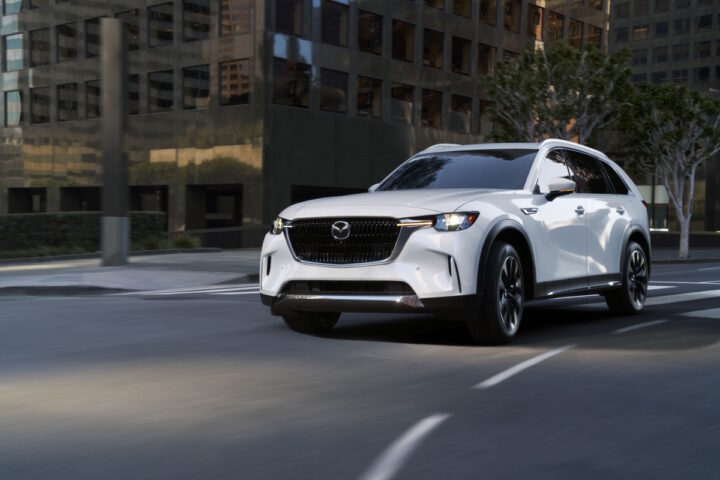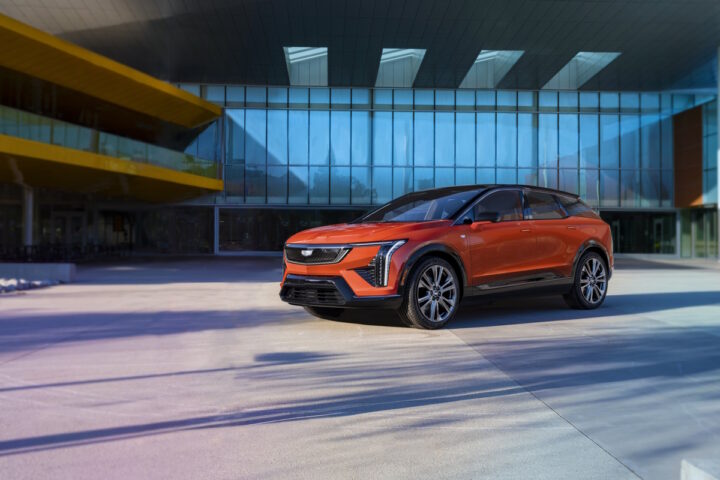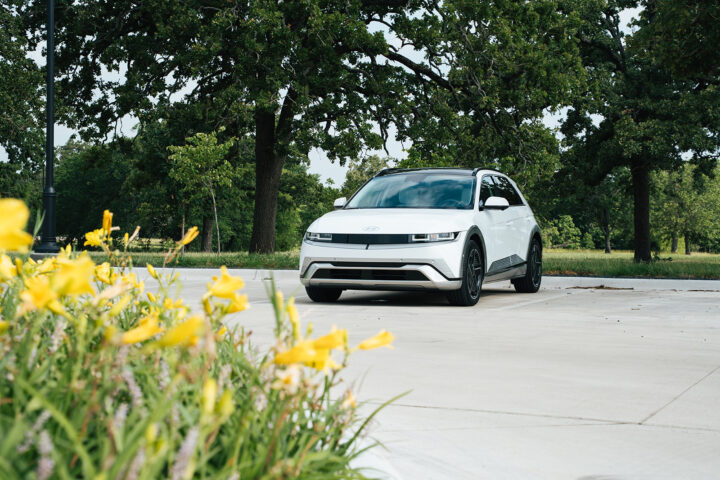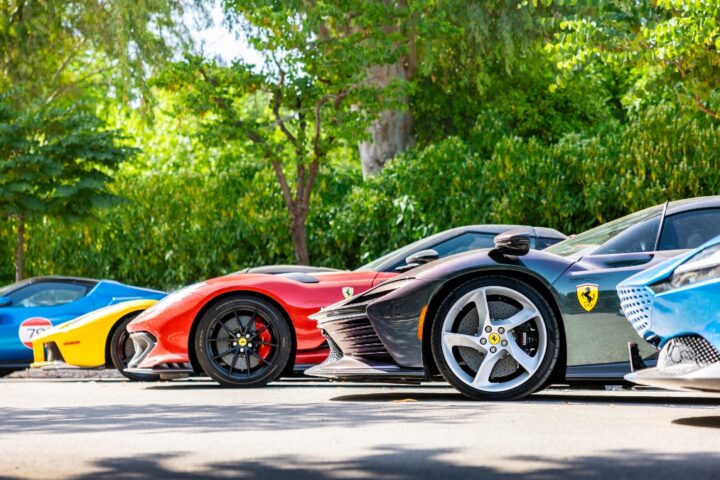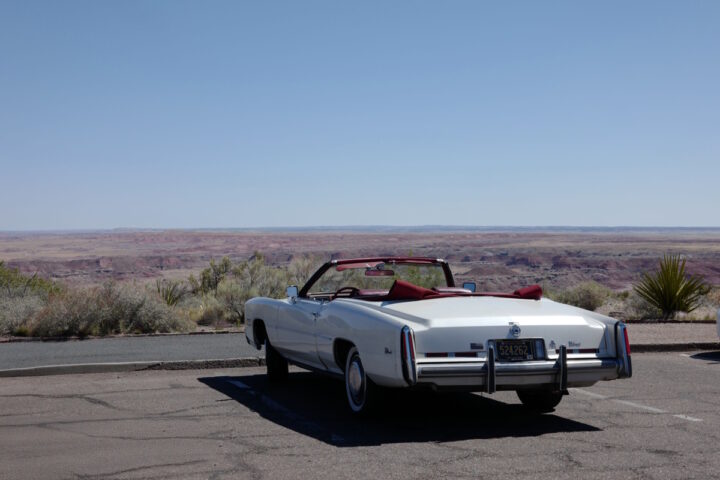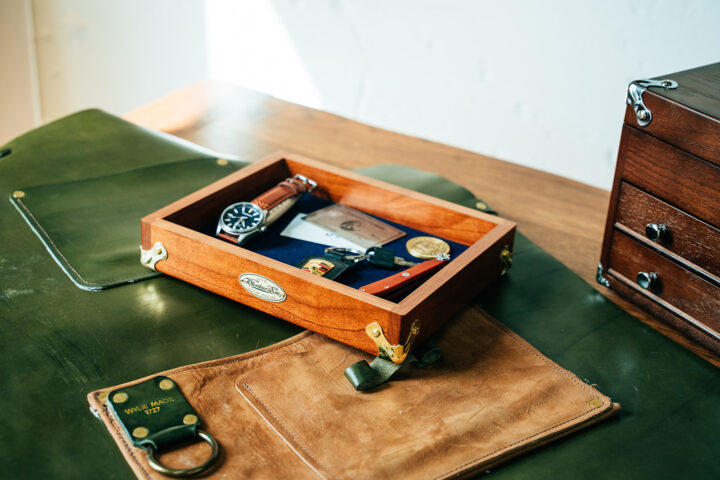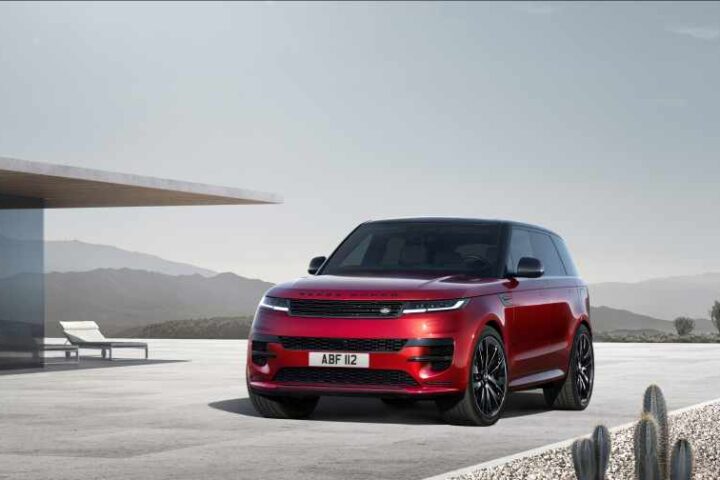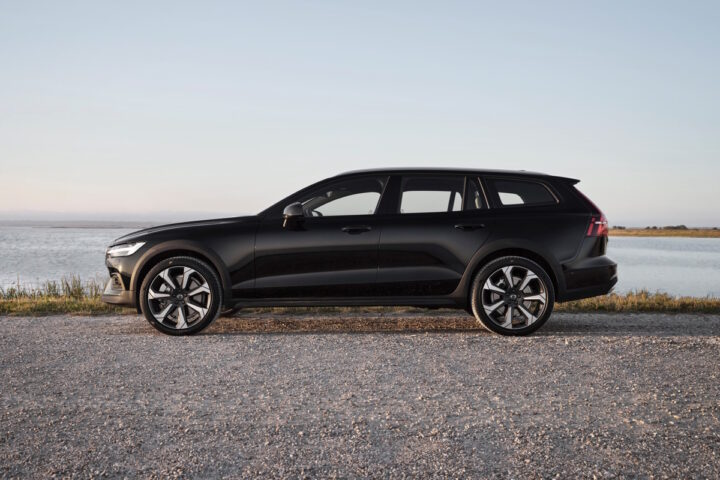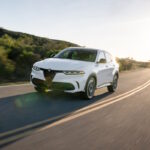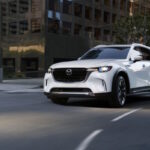There’s a certain thrill to pulling up in an Alfa Romeo — the subtle nods from people who “get it,” the gentle hum of the exhaust note with Italian flair, the sense that you’re driving something more artistic than engineered. The 2025 Alfa Romeo Stelvio Veloce, especially when coated in the jaw-dropping Verde Fangio Metallic paint, a $2,200 option, still delivers that drama.
But once the admiration fades and the actual driving begins, it’s hard to ignore that the Stelvio is no longer the sprightly newcomer in the luxury compact SUV game. It’s a nearly decade-old design trying to compete in a class filled with increasingly futuristic rivals — and at a net price of $61,190, one can’t help but ask: Is beauty alone still enough?

Alfa Romeo Stelvio Veloce: Still the Belle of the Ball
There’s no denying it — the Stelvio Veloce is still one of the best-looking SUVs on the market. It wears curves like a Milanese runway model. That Verde Fangio Metallic looks positively decadent under sunlight. Pair it with the dark 20-inch wheels and gloss-black trim, and it’s every bit the automotive equivalent of a tailored Italian suit — bold, elegant, and unapologetically stylish.
From the front, the trademark Scudetto grille flanked by thin LED headlamps remains a head-turner. The proportions are taut, athletic, and distinctly Alfa. But herein lies the rub: It’s the same silhouette we’ve seen since the Stelvio debuted in 2016. In a market where brands like BMW, Mercedes, and Genesis are reinventing their SUVs every few years, the Stelvio’s once-fresh face is now a familiar one.
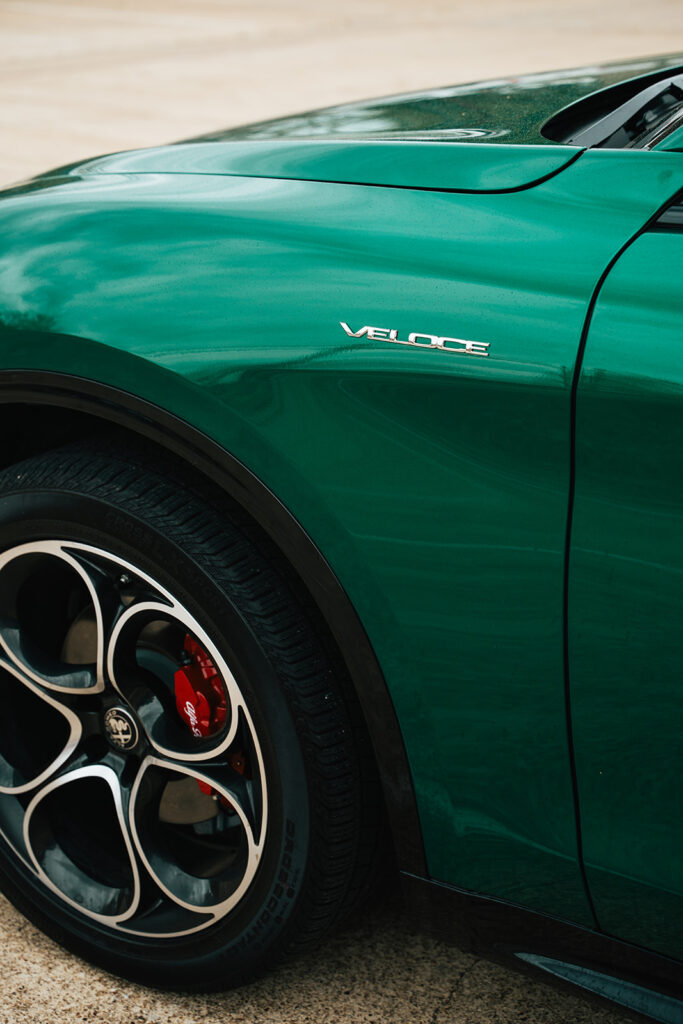
A Driver’s SUV – But Still a Gas-Only Offering
Under the hood, the Stelvio Veloce packs a 2.0-liter, turbocharged, four-cylinder engine pushing out 280 horsepower and 306 lb-ft of torque. Mated to a slick 8-speed automatic and all-wheel-drive, it rockets from 0-60 in about 5.4 seconds. On the road, it’s poised and athletic — more so than nearly any other SUV in this class. The steering is quick and direct, the chassis feels light on its feet, and the ride is firm but rarely punishing.
In a vacuum, the Stelvio is fun — genuinely fun — to drive. But we’re no longer in 2016. By 2025, even the enthusiast-focused crowd has started to expect some electrified options. Competitors like the BMW X3 and Audi Q5 offer plug-in hybrids, and the new Mercedes GLC is whisper-quiet thanks to mild hybrid systems and ultra-refined cabins.
The Stelvio? Still pure internal combustion. That’s a pro for purists but a con for those looking for a future-proof daily and better gas mileage.
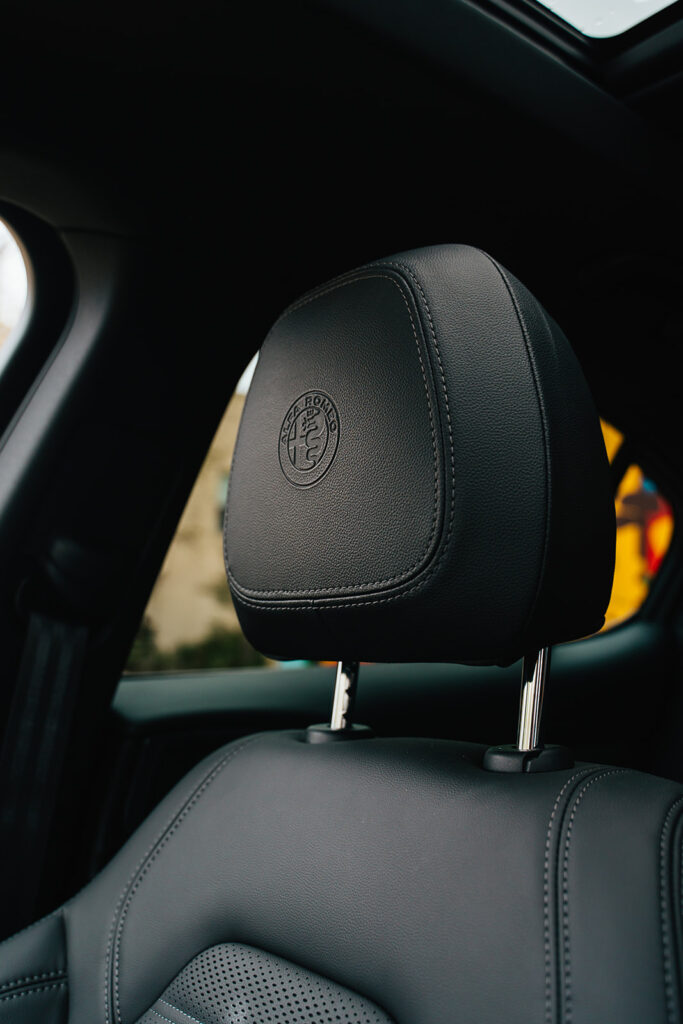
Inside: Good Bones, Dated Execution
Slide into the driver’s seat, and the Alfa’s age becomes more apparent. The interior design is clean and minimal, with a sporty, low-slung driving position and comfortable leather-trimmed sport seats. The 8.8-inch infotainment display sits recessed into the dash — a far cry from the panoramic, pillar-to-pillar screens found in newer rivals.
The software is fine. The nav system works. Wireless Apple CarPlay and Android Auto are now standard. But the graphics are clunky compared to what you’ll find in even a Hyundai Tucson, let alone a Genesis GV70. The 7-inch digital gauge cluster also feels dated, especially when competitors are offering massive 12-inch fully digital, customizable instrument panels.
The quality is a mixed bag — leather seats and aluminum paddle shifters feel upscale, but hard plastics and unremarkable switchgear bring the cabin experience back down to earth. For a car cresting $60,000, it doesn’t quite deliver the elevated tactile experience you’d expect.
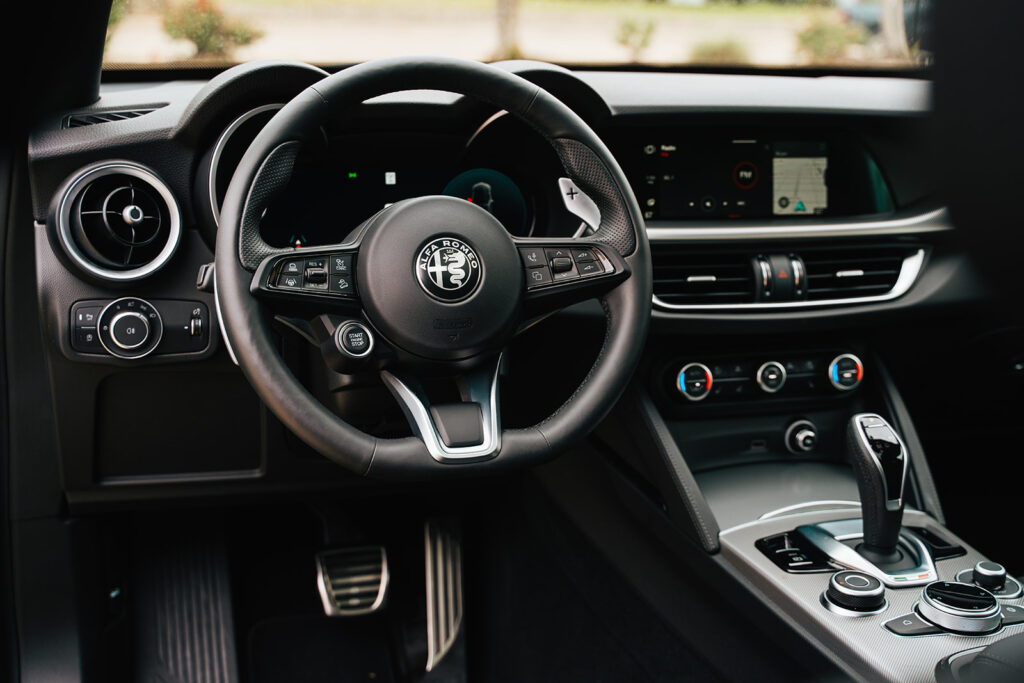
The Stelvio does come with a respectable list of safety and driver-assist features: forward collision warning, lane departure warning, adaptive cruise control, blind-spot monitoring, and rear cross-traffic alert are all standard. But again, what was once considered premium is now par for the course.
Many competitors offer more advanced systems — hands-free driving modes, 360-degree cameras, augmented reality navigation. The Stelvio doesn’t. There’s no head-up display, no semi-autonomous driving, and no surround-view camera — features that buyers at this price point increasingly expect.
This is where the Alfa starts to fall behind in the luxury compact SUV arms race. The Genesis GV70 feels like a spaceship by comparison. The BMW X3 and Audi Q5 offer tech suites that are both richer and more intuitive. Even the Acura RDX has a more premium feel inside — and it costs less.
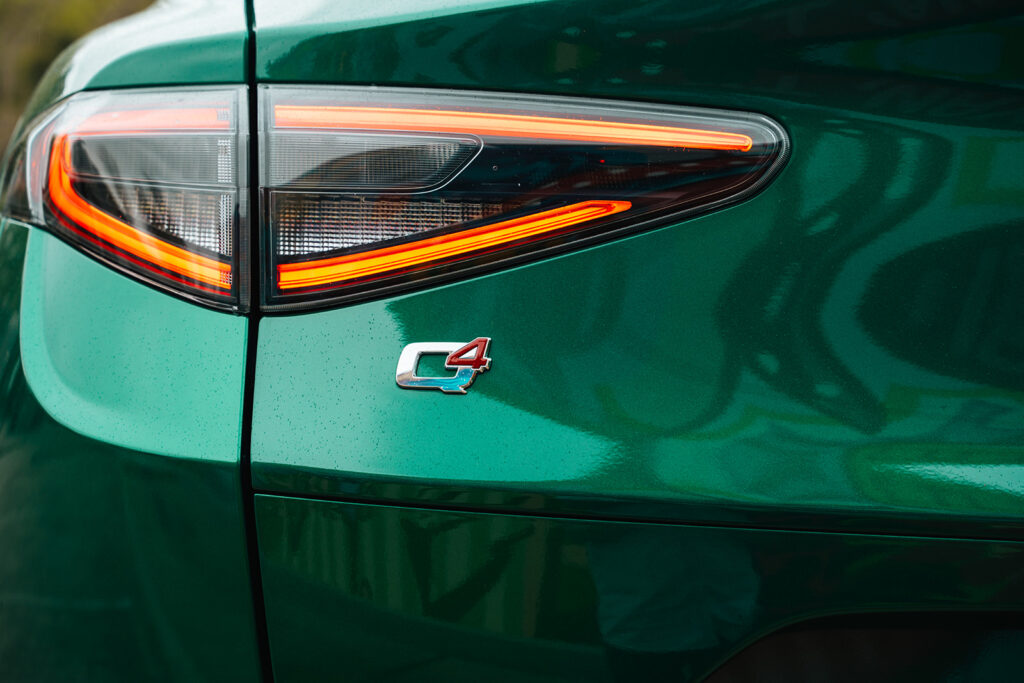
The Elephant in the Room: Aging Platform, Aging Strategy
The Stelvio rides on the Giorgio platform, which debuted alongside the Giulia sedan. At the time, it was a breath of fresh air — light, agile, RWD-based. But nearly ten years later, it’s starting to show its limitations. There’s only so much Alfa can tweak and refresh without undertaking a full redesign.
And with parent company Stellantis retooling its entire strategy around EVs and shared modular architectures, the Stelvio’s future seems more uncertain than ever. A replacement is likely coming, possibly on a platform shared with upcoming Dodge or Peugeot products. That leaves the 2025 model as something of a swan song — a last hurrah for old-school Alfa driving dynamics in a market that’s moving on.
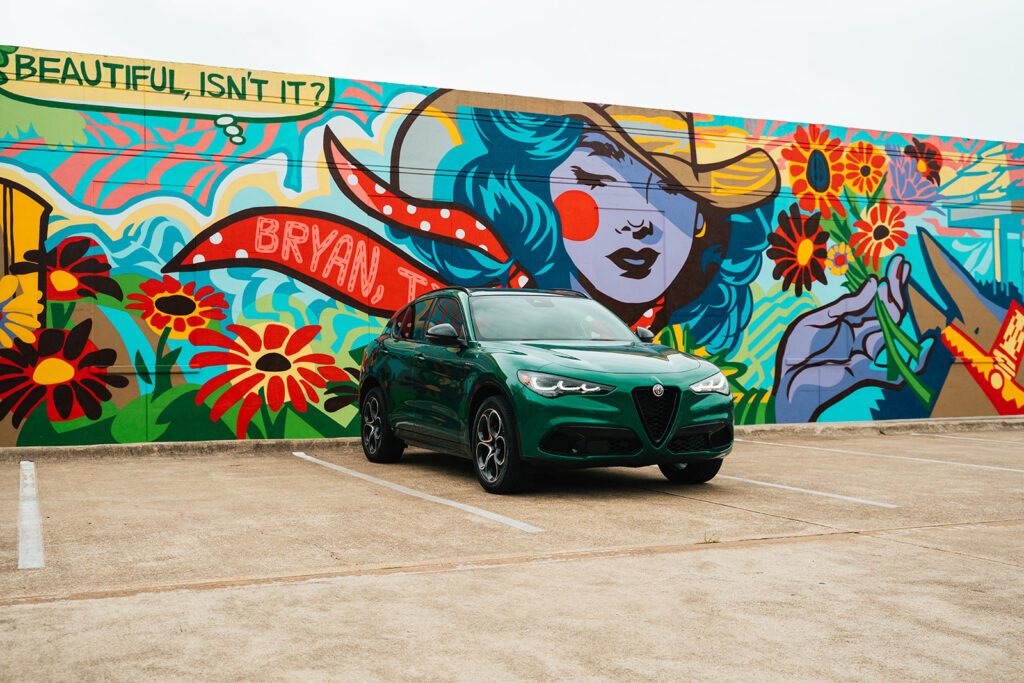
So, Who Is the Stelvio Veloce Really For?
If you’re buying with your heart, the 2025 Alfa Romeo Stelvio Veloce still has serious appeal. It’s beautiful. It’s fast. It sounds great. And it makes an emotional case that few vehicles in this segment can match. Plus, there is just something special about driving anything from Italy; every trip to the grocery store is an event, pushing the Ferrari-like start button on the steering wheel, listening to the exhaust note, and knowing you will likely be the only one in the parking lot does have some value.
But if you’re buying with your head? That $61,190 price tag starts to sting. You can get a BMW X3 M40i (which I have yet to drive) with more power, better tech, and a newer interior for about the same money. You can opt for the Genesis GV70, which undercuts the Alfa and offers class-leading luxury and design. Or go electric with the Tesla Model Y Performance or the new Mercedes EQB, and enjoy better efficiency, tax credits, and cutting-edge features.
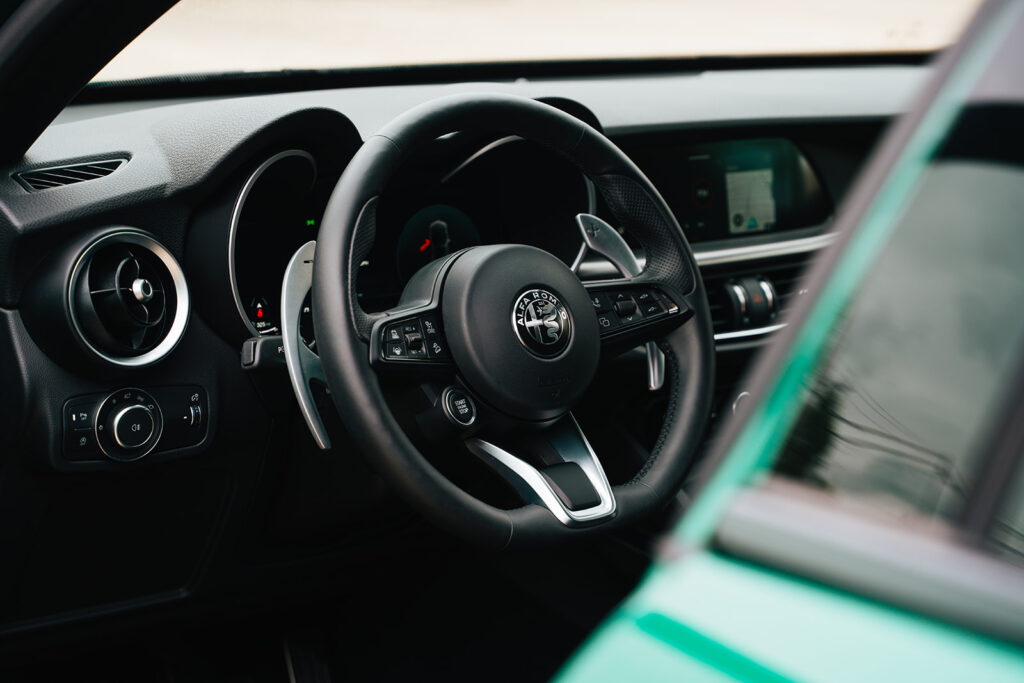
The 2025 Alfa Romeo Stelvio Veloce is a beautiful anachronism. It still looks and drives with passion — and in a world of increasingly sterile, digitally dominated vehicles, that counts for something. But for all its charm, the Stelvio is ultimately held back by a dated platform, aging interior tech, and a lack of forward-thinking features.
At over $60,000, it’s hard to call it a value. It’s a vehicle for someone who doesn’t care what infotainment system it has — someone who wants an Alfa, because it’s an Alfa. That buyer still exists. But they’re fewer and farther between in today’s market.
If you want art, passion, and performance — and are willing to live without the latest tech — the Stelvio still delivers.
If you want everything else? It might be time to look elsewhere.



